Rhombus Study Guide
Definition:
A rhombus is a quadrilateral with four sides of equal length and opposite angles that are equal.
Key Properties:
- All sides are of equal length
- Opposite angles are of equal measure
- Diagonals bisect each other at right angles
- It is a type of parallelogram with additional properties
Formulas:
Area of a rhombus: A = (diagonal1 * diagonal2) / 2
Perimeter of a rhombus: P = 4 * side length
How to Identify:
To identify a rhombus, look for a quadrilateral with all sides of equal length and opposite angles of equal measure. It can also be identified by its diagonals intersecting at right angles.
Examples:
Example 1: Given side length = 6 units, find the area and perimeter of the rhombus.
Area = (6 * 8) / 2 = 24 square units
Example 2: In a rhombus, if one angle is 120 degrees, what is the measure of each of the other three angles?
Since opposite angles in a rhombus are equal, each of the other three angles will also be 120 degrees.
[Rhombus] Related Worksheets and Study Guides:
.◂Math Worksheets and Study Guides Fourth Grade. Measurement
Study Guide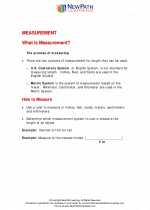 Measurement
Measurement  Activity Lesson
Activity Lesson Comparing Volume Capacities
Comparing Volume Capacities  Activity Lesson
Activity Lesson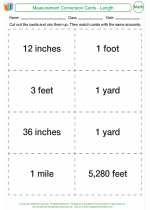 Measurement Conversion Cards
Measurement Conversion Cards  Activity Lesson
Activity Lesson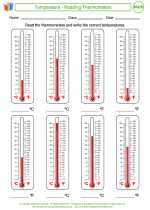 Temperature - Reading Thermometers
Temperature - Reading Thermometers  Worksheet/Answer key
Worksheet/Answer key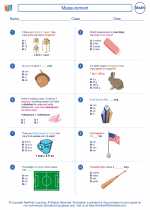 Measurement
Measurement  Worksheet/Answer key
Worksheet/Answer key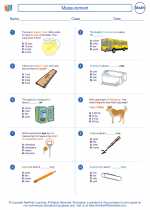 Measurement
Measurement  Worksheet/Answer key
Worksheet/Answer key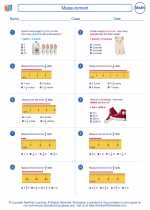 Measurement
Measurement  Worksheet/Answer key
Worksheet/Answer key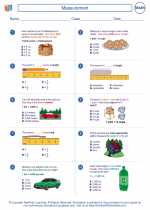 Measurement
Measurement  Worksheet/Answer key
Worksheet/Answer key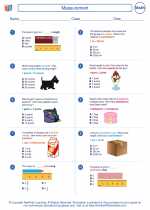 Measurement
Measurement  Worksheet/Answer key
Worksheet/Answer key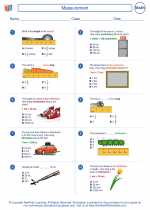 Measurement
Measurement  Worksheet/Answer key
Worksheet/Answer key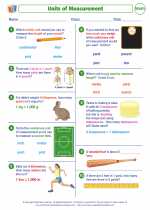 Units of Measurement
Units of Measurement  Worksheet/Answer key
Worksheet/Answer key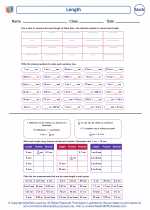 Length
Length  Worksheet/Answer key
Worksheet/Answer key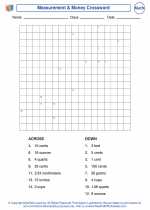 Measurement & Money Crossword
Measurement & Money Crossword  Worksheet/Answer key
Worksheet/Answer key Measurement Conversions
Measurement Conversions  Vocabulary/Answer key
Vocabulary/Answer key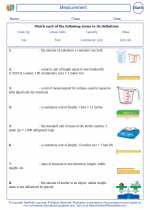 Measurement
Measurement  Vocabulary/Answer key
Vocabulary/Answer key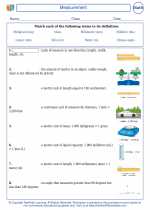 Measurement
Measurement  Vocabulary/Answer key
Vocabulary/Answer key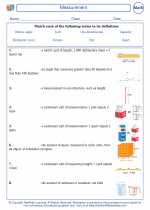 Measurement
Measurement 

 Activity Lesson
Activity Lesson
 Activity Lesson
Activity Lesson
 Activity Lesson
Activity Lesson
 Worksheet/Answer key
Worksheet/Answer key
 Worksheet/Answer key
Worksheet/Answer key
 Worksheet/Answer key
Worksheet/Answer key
 Worksheet/Answer key
Worksheet/Answer key
 Worksheet/Answer key
Worksheet/Answer key
 Worksheet/Answer key
Worksheet/Answer key
 Worksheet/Answer key
Worksheet/Answer key
 Worksheet/Answer key
Worksheet/Answer key
 Worksheet/Answer key
Worksheet/Answer key
 Worksheet/Answer key
Worksheet/Answer key
 Vocabulary/Answer key
Vocabulary/Answer key
 Vocabulary/Answer key
Vocabulary/Answer key
 Vocabulary/Answer key
Vocabulary/Answer key

The resources above cover the following skills:
Measurement (NCTM)
Understand measurable attributes of objects and the units, systems, and processes of measurement.
Understand such attributes as length, area, weight, volume, and size of angle and select the appropriate type of unit for measuring each attribute.
Understand the need for measuring with standard units and become familiar with standard units in the customary and metric systems.
Understand that measurements are approximations and how differences in units affect precision.
Apply appropriate techniques, tools, and formulas to determine measurements.
Select and apply appropriate standard units and tools to measure length, area, volume, weight, time, temperature, and the size of angles.